The content of the article
Black mold is a frequent visitor in humid and warm rooms. Most suitable for these conditions is the bathroom. Mold can appear on the ceiling, on walls, along water pipes, at the junction of tiles. Fungal spores are not only visible marks on the walls. Part of the spore can soar in the air and penetrate the wall. The presence of mold in the living room negatively affects the health of residents. This can lead to diseases of the respiratory system, infectious diseases, allergic reactions. If there is mold in the house, asthmatics have seizures much more often.
Why does mold occur?
Where does mold come from and why does it appear most often in a bathroom? Here are a few key reasons.
- High humidity. Humidity is the environment in which mold develops best. All bathing procedures take place in the bathroom, after taking a shower, steam remains in the air, which condensates on the walls and ceiling. These are ideal conditions for mold formation.
- Inability to ventilate the room. Most typical houses do not have a window in the bathroom. There is a shaft for weathering moist air. But often people do not monitor her condition. If it is clogged, moist air remains in the room and settles with drops of water on the walls.
- Lack of drying. Indoor air can be dried to reduce humidity. A radiator or heated towel rail is provided for this. However, they are not always in good condition. If these appliances do not warm up enough and dry the air, mold cannot be avoided.
- Natural light. As already mentioned, the bathrooms do not have a window and natural light that kills mold. The absence of ultraviolet rays gives an additional plus to the development of the fungus.
- Incorrect repair work. When you make repairs in the bathroom, you need to carefully treat the surfaces with antifungal agents before finishing work. They kill possible remaining spores and prevent mold. Mold can also develop with the wrong choice of finishing material for the bathroom. It most easily settles in the porous structure of the material, for example, in plaster.
Leaks in the pipes. This creates additional humidity in the room, moreover, around the clock.
How to reduce humidity in the bathroom
Humidity is the main condition for the development of the fungus. Therefore, it must be eliminated. For this, first of all, it is necessary to provide good ventilation. If the bathroom does not have a window, you need to check the ventilation duct - the shaft. Sometimes for sufficient ventilation it is necessary to install a small exhaust fan. If it is turned on, you need to open the door to the bathroom so that there is air access.
To cope with mold, you need to maintain a sufficiently high air temperature in the bathroom. It should exceed the overall temperature in the apartment by a couple of degrees. To do this, you need to clean or replace the radiators, install a powerful heated towel rail. Another great way to heat the air in the bathroom is underfloor heating. If pipes leak, the leak must be urgently fixed.
If the bathroom is located at the end of the house, humidity may appear due to condensation. This occurs in winter, when the outside temperature varies greatly with the inside temperature. To avoid this, you need to insulate the walls of the house with special materials. If you live on the first floor, you need to insulate the floor.
And further. Do not dry laundry in the bathroom, this increases the risk of mold.It is better to hang clothes in the open air.
We clean surfaces from mold
To cope with mold, first you need to clean the surface of black spots. Remember to wear rubber gloves. Cleaning products - sponges and rags must not be reused - they may contain fungal spores. After processing, they need to be thrown out. Be sure to wear a respiratory mask to avoid inhaling dangerous fumes.
- Tile. If mold has formed on the tile, it is enough to wipe it with warm chlorinated water. The solution should be sufficiently concentrated. Usually this is enough, because tile is a dense material into which mold cannot penetrate.
- Joints between tiles. If mold is eaten at the joints, then simple processing is indispensable. It is necessary to carefully clean the joints with a spatula and allow them to dry. Then dilute the grout and add a special antiseptic to it. It can be bought at any hardware or hardware store.
- Plaster. If mold is stuck in the plaster or in the layer under the tile, you need to completely clean the surface to concrete. Then the walls need to be dried with a construction hairdryer and treated several times with an antiseptic composition. And only after that start decorating.
Home Remedies for Mildew
- Copper sulfate. It can be bought at a hardware store. On a liter of water you need to add 10 grams of vitriol. To apply on the cleared and dried surface with a brush. Especially thoroughly with a thick layer, it is necessary to process those areas on which mold was. For prevention, apply vitriol on the entire surface of the walls and ceiling, because you do not know where mold may occur next time.
- Laundry soap. This eco-friendly product contains fatty acids that can easily defeat mold. To prepare the solution, grate the soap and dilute with hot water. After some time, when the soap has completely dissolved, this liquid must be poured into a spray bottle and sprayed in the place where the mold was. Leave the treated area for several hours, and only after complete drying, proceed to finish.
- Bleach for laundry. This is another effective way to eliminate the remains of fungal spores. Dilute a small amount of bleach with ten parts of water. This product can be sprayed with a spray gun or just wet a rag in it and wipe the walls. Do not rinse the solution. This is an effective tool that has only one drawback - a pungent odor. The procedure is not recommended if there are children in the house. After treatment, thoroughly ventilate the room.
- Chlorine. Any chlorine-based products can eliminate mold. It can be whiteness, domestos or other disinfectants for toilet hygiene. It is enough to dissolve them in a small amount of water and process the walls and ceiling.
- Soda and vinegar. These home cleaners are found in every home. Thoroughly sprinkle blackened areas of mold with baking soda. Then pour vinegar on top. The reaction will go - everything will start to foam, leave it for a few minutes. When the soda stops bubbling, the black areas can be cleaned with a sponge or a stiff brush. Do not forget to wear gloves - the composition is quite caustic.
- Tea oil. Tea tree essential oil can eliminate small foci of mold. Such oil can be bought at a pharmacy or hardware store. A bottle of oil 100 ml should be dissolved in a liter of warm water and wipe with this composition all exposed surfaces of the walls and ceiling. Leave for a few hours. Make sure that no water gets on the treated surface at this time - otherwise the procedure will be useless.
- Boric acid, vinegar, hydrogen peroxide. Boric acid can eliminate mold forever.For greater effectiveness of the composition, a tablespoon of boric acid should be mixed with two tablespoons of peroxide and the same amount of vinegar. Add 4 tablespoons of water and mix thoroughly. Apply the composition with a brush to all corners and black spots, leave and do not rinse.
- Soda. Sometimes, along with the mold itself, its unpleasant smell is felt in the room. You can get rid of it with baking soda. Pour soda in a saucer and leave in the bathroom. Soda powder perfectly absorbs unpleasant odors. You can also wipe all surfaces with a weak soda solution.
- Camphor or mothballs balls. They are usually used to protect clothing and shoes from moths and other pests. However, this tool is also used in the fight against fungal infections. Leave the balls in the bathroom and they will disinfect the air, preventing mold from multiplying.
- Anthracene oil. It can be bought at a hardware store or pharmacy. This product is diluted in a small amount of warm water and sprayed on all blackened areas. After processing, a slightly unpleasant odor remains, so you need to ventilate the room.
- Iodine. Of course, you won’t have to treat the surface with iodine, because yellow traces may remain, but you can leave an open bottle on a shelf in the bathroom. Iodine kills mold spores that are in the air.
After that, the wall is treated with special anti-fungicidal agents that are designed specifically for this. These are professional compounds sold in hardware stores. Typically, the treatment consists of applying several successive layers of the agent. And only after that you can begin to finish.
Mold must not be allowed in the bathroom, because it is very dangerous to health. Properly made repairs and preventive measures will help you get rid of mold forever.
Video: a tool that eliminates mold forever

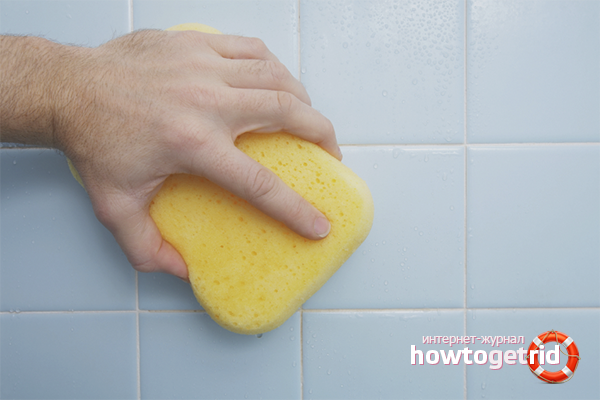
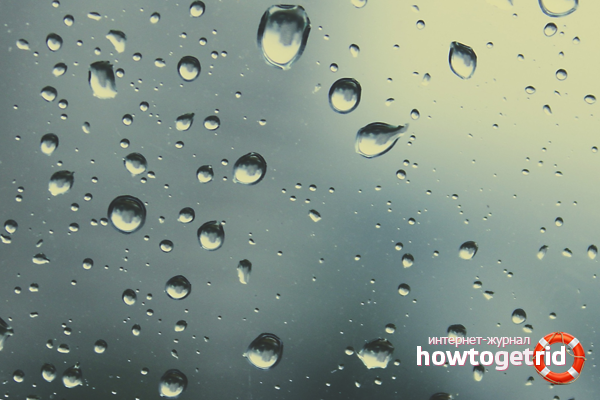

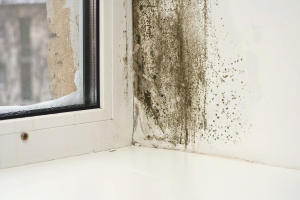
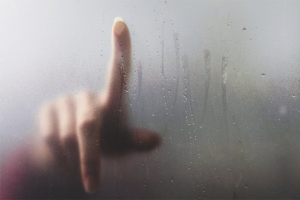
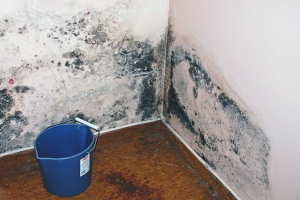

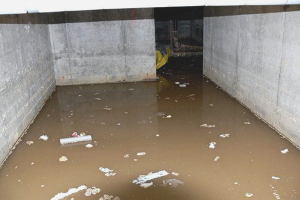
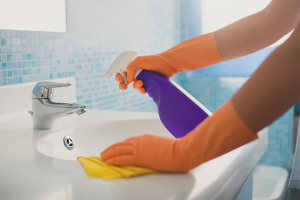

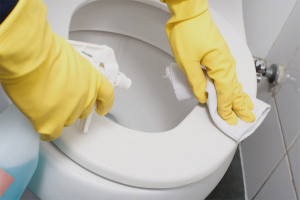
Submit